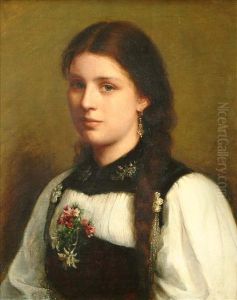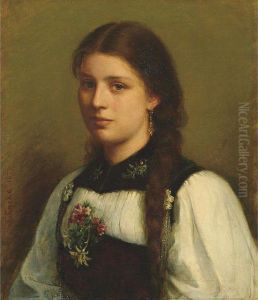Erdmann Encke Paintings
Erdmann Encke was a notable German sculptor, born on February 11, 1851, in Berlin, Germany, and passed away on December 24, 1908. His contributions to the arts during the late 19th and early 20th centuries were significant, particularly in the realm of sculpture, where he garnered respect for his ability to blend classical traditions with the emerging tastes of his time. Encke's work is characterized by its attention to detail, its classical beauty, and its thematic diversity, ranging from mythological figures to contemporary subjects.
Encke received his education at the Prussian Academy of Arts in Berlin, where he was heavily influenced by the neoclassical ideals that were predominant in the German art scene of the era. He was a student of renowned sculptors such as Fritz Schaper and Albert Wolff, who were instrumental in shaping his early career and artistic development. His dedication and talent soon led him to become one of the most prominent sculptors in Germany, recognized both nationally and internationally.
Throughout his career, Encke created a variety of works, including statues, busts, and reliefs. One of his most famous works is the statue of Albrecht Thaer, located in Berlin, which showcases his skill in creating lifelike and dynamic figures. His ability to capture the essence of his subjects earned him numerous commissions, and his sculptures were featured in public spaces, galleries, and private collections across Germany.
Despite his success, Encke remained committed to his artistic vision, which was rooted in the belief that art should emulate the beauty and ideals of ancient Greek and Roman cultures. This classical approach set him apart from some of his contemporaries, who were beginning to experiment with more modernist styles. Nevertheless, Encke's works continued to be celebrated for their elegance and craftsmanship.
Erdmann Encke's legacy is preserved in the collections of various museums and in the public spaces that are graced by his sculptures. His dedication to classical beauty and the high quality of his work have ensured that he remains a respected figure in the history of German art, even more than a century after his death.

